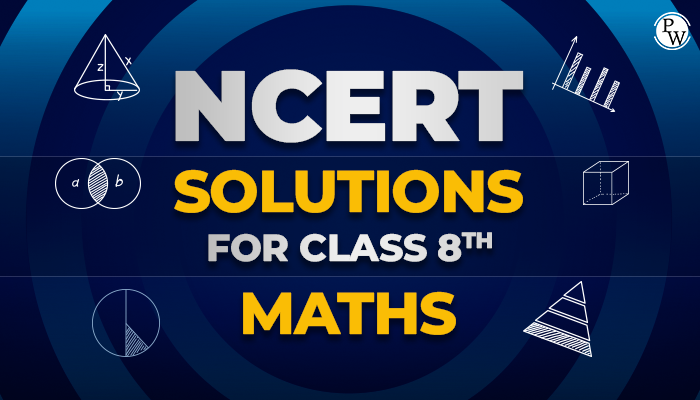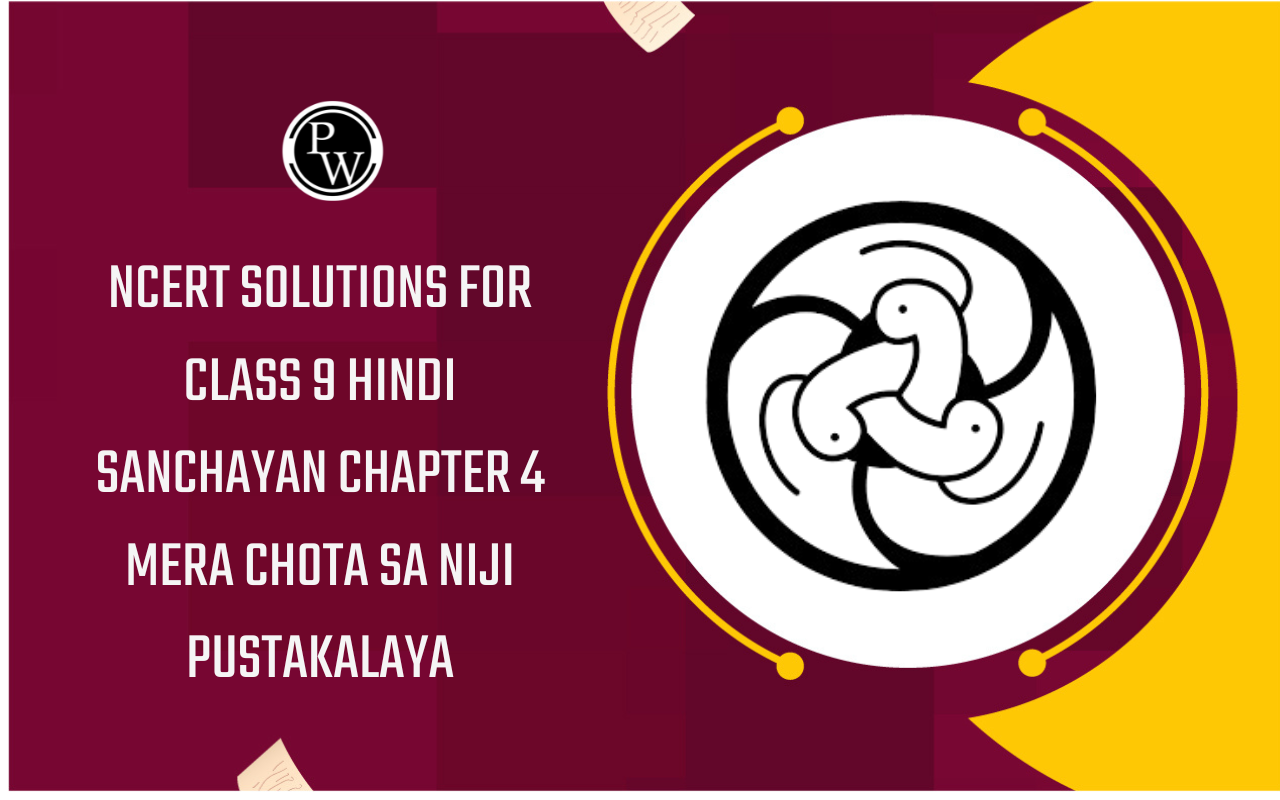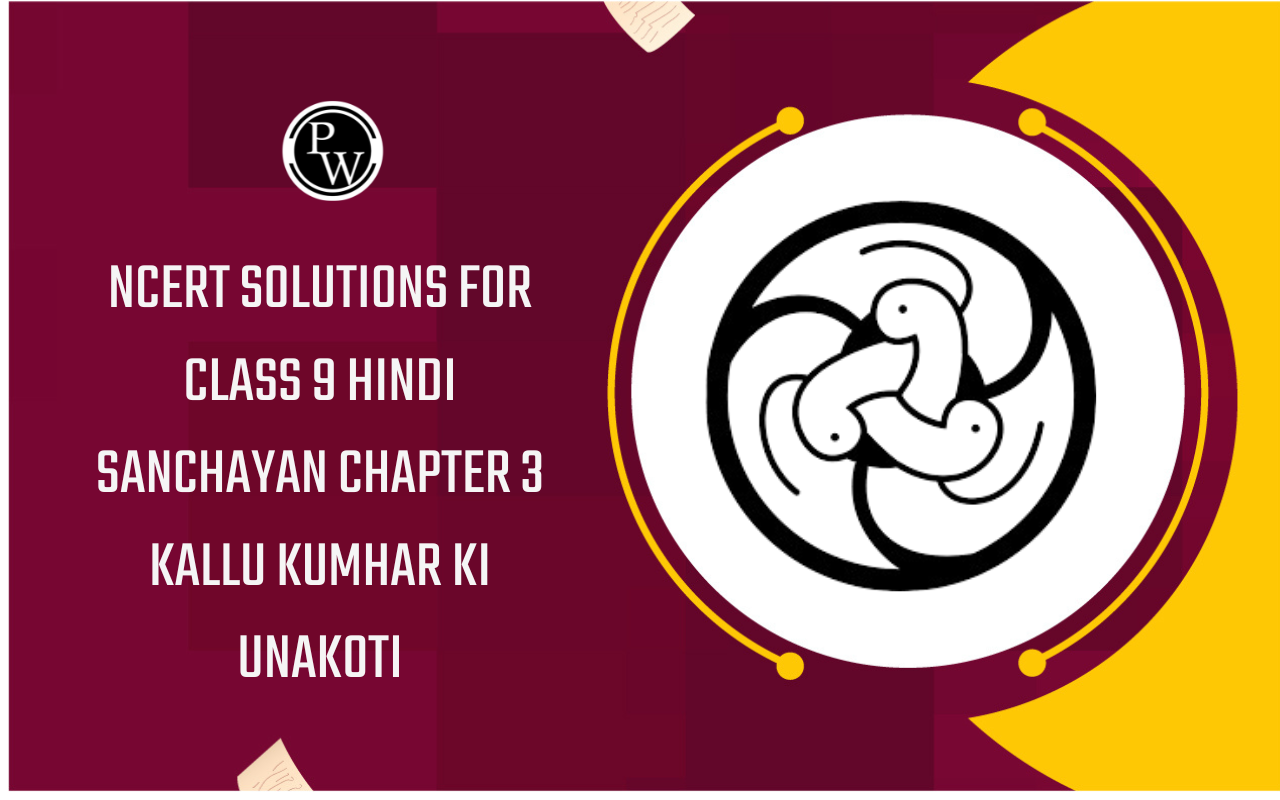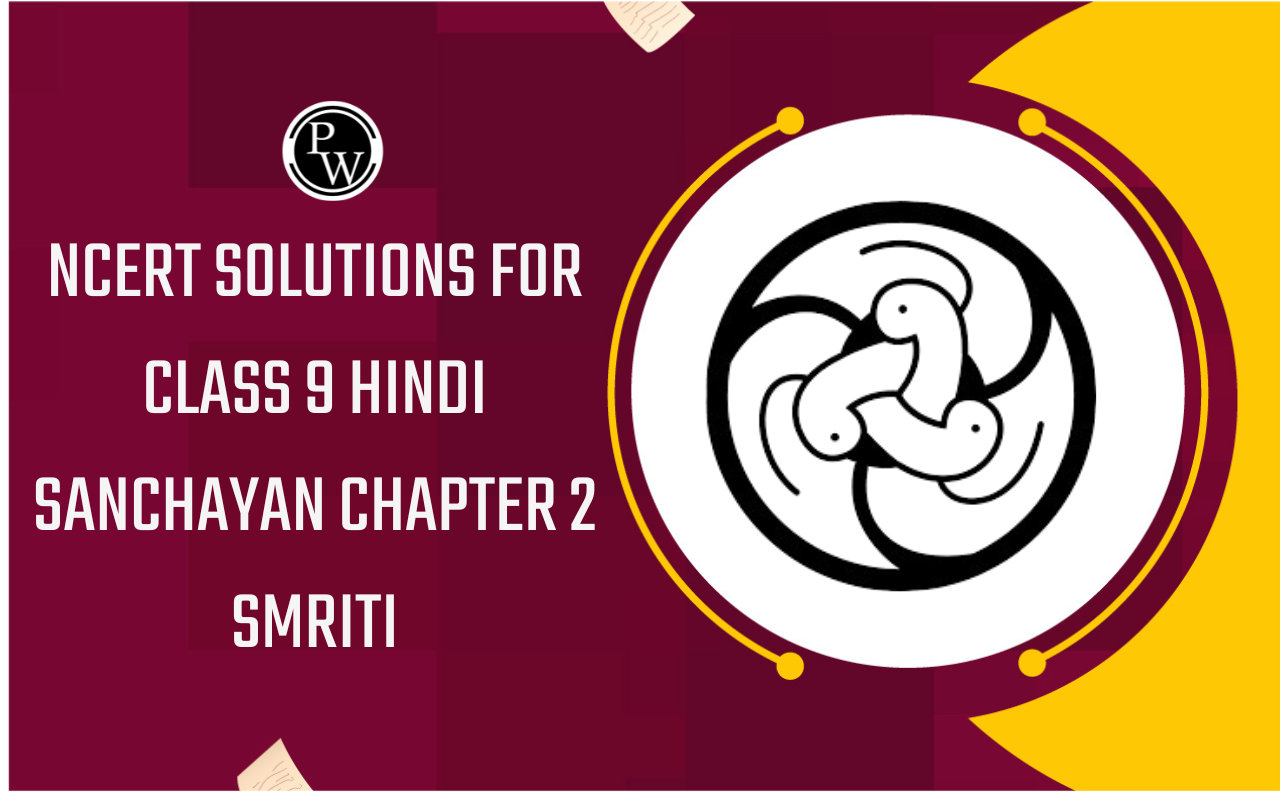
NCERT Solutions for Class 8 Maths Updated 2023-24
Mathematics is an important subject, but it can be challenging for students. The Physics Wallah team has come the with NCERT solutions for Class 8 Math. We aim to make math clear and easy to understand, boosting your confidence. These solutions are valuable for improving your math scores. Students can easily access the NCERT Class 8 Maths Solutions PDF provided links below. We are dedicated to offering you the best possible support and help.
NCERT Solutions for Class 8 Maths Chapter-Wise List
Here are the chapter-wise NCERT Solutions for Class 8 Maths prepared by our experts at PW. These detailed solutions will help you understand all the concepts explained in each chapter. Check out the list of Class 8 Math chapters below.

NCERT Solutions for Class 8 Maths Chapter 1 - Rational Numbers
Rational numbers are crucial in describing quantities or measures that whole numbers alone cannot represent. These quantities, such as length, mass, time, and others, are effectively measured using rational numbers.
The initial chapter of the NCERT Class 8 textbook focuses on rational numbers. Within this chapter, students will explore the properties of integers, natural numbers, and whole numbers. Additionally, they will learn how to represent rational numbers on the number line and the significance of zero and one in addition and multiplication. A solid understanding of this chapter is essential for comprehending more advanced concepts. The chapter includes various exercises and questions to reinforce the learning process.
Also Check-
- Important Questions for class 8 maths Chapter 1 Rational Numbers
- RS Aggarwal Class 8 solutions for Maths Chapter 1 Rational Numbers
NCERT Solutions for Class 8 Maths Chapter 2 - Linear Equations in One Variable
Linear equations in one variable are highly useful in determining the value of an unknown integer when two or more integers are given.
In this chapter, students will be introduced to the concept of linear equations in one variable and learn various methods to solve them.The chapter includes exercises to test students' ability to solve these equations using different approaches.
Also Check-
- Important Questions for class 8 maths Chapter 2 Linear Equations in One Variable
- RS Aggarwal Class 8 solutions for Maths Chapter 2 Linear Equations in One Variable
NCERT Solutions for Class 8 Maths Chapter 3 - Understanding Quadrilaterals
Knowing about quadrilaterals is extremely beneficial in architecture and engineering as it assists in designing floor plans for buildings and other structures.
Students will comprehensively understand quadrilaterals in this chapter and learn about their properties. They will also explore the fascinating realm of polygons, like pentagons and hexagons, expanding their knowledge further.
Also Check-
- Important Questions for class 8 maths Chapter 3 Understanding Quadrilaterals
- RS Aggarwal Class 8 solutions for Maths Chapter 3 Understanding Quadrilaterals
NCERT Solutions for Class 8 Maths Chapter 4 - Practical Geometry
Practical geometry is essential for visualizing and applying geometric concepts in real-world situations. It finds applications in various fields like construction, sculpture, and computing dimensions.
Having learned about quadrilaterals, students will now explore Practical Geometry in this chapter. They will discover how to construct different quadrilaterals based on specific parameters such as side lengths, enclosing angles, and diagonals. By working through the exercises provided, students will learn to handle quadrilateral concepts and be better prepared to tackle more advanced problems.
Also Check- Important Questions for class 8 maths Chapter 4 Practical Geometry
NCERT Solutions for Class 8 Maths Chapter 5 - Data Handling
Data storage and security depend on the art and skill of data handling. Students must understand data handling to effectively manage their and others' important information securely and accurately.
In this chapter, students delve into the concept of data and its analysis. They learn how to organize data systematically, which forms the foundation of data handling. Additionally, students explore methods to represent organized data using bar graphs, pie charts, histograms, and more. These skills will enable them to better interpret and present data for various purposes.
Also Check-
- Important Questions for class 8 maths Chapter 5 Data Handling
- RS Aggarwal Class 8 solutions for Maths Chapter 5 Data Handling
NCERT Solutions for Class 8 Maths Chapter 6 - Squares and Square Roots
Squares and square roots are widely used for calculating areas of spaces, financial gains and losses, and interest rates, among other applications.
This chapter holds significant importance for Class 8 students, especially from an examination perspective. It offers interesting problem-solving opportunities once the concepts are well understood. Students will learn about squares, square roots, and the fascinating patterns related to them. Additionally, the chapter covers the concept and properties of Pythagorean triplets, which further enhances their knowledge in this area.
Also Check-
- Important Questions for class 8 maths Chapter 6 Squares and Square Roots
- RS Aggarwal Class 8 solutions for Maths Chapter 6 Squares and Square Roots
NCERT Solutions for Class 8 Maths Chapter 7 - Cubes and Cube Roots
Cubes and cube roots are essential for calculating volumes of objects, working with exponents, and understanding interest rates, among other practical uses.
In this chapter, students build upon their previous knowledge and explore the world of cubes and cube roots. They will learn about the properties and patterns related to these mathematical concepts, enriching their understanding as they progress through the chapter.
Also Check-
- Important Questions for class 8 maths Chapter 7 Cube and Cube Roots
- RS Aggarwal Class 8 solutions for Maths Chapter 7 Cube and Cube Roots
NCERT Solutions for Class 8 Maths Chapter 8 - Comparing Quantities
Comparing different quantities is a valuable approach to analyzing and studying two or more quantities, enabling us to comprehend their relationships and distinctions.
The chapter on Comparing Quantities will likely captivate students' interest, as they will become acquainted with concepts like percentages, discounts, and sales – terms encountered in our daily lives. Additionally, they will learn to calculate simple and compound interests, which have significant practical applications in various aspects of life. This chapter provides valuable knowledge and real-world skills to the students.
Also Check- Important Questions for class 8 maths Chapter 8 Comparing Quantities
NCERT Solutions for Class 8 Maths Chapter 9 - Algebraic Expressions and Identities
Understanding algebraic expressions and identities empowers students to discover unknown values and manipulate mathematical information, making it easier to solve problems.
This chapter introduces students to various terms related to Algebraic Expressions and Identities. They will learn about factors, coefficients, monomials, binomials, and polynomials and perform different operations on them. To master this chapter in CBSE Class 8 Maths, students must diligently practice all the exercise questions, ensuring a strong grasp of the concepts.
Also Check-
- Important Questions for class 8 maths Chapter 9 Algebraic Expressions and Identities
- RS Aggarwal Class 8 solutions for Maths Chapter 9 Algebraic Expressions and Identities
NCERT Solutions for Class 8 Maths Chapter 10 - Visualising Solid Shapes
Understanding solid shapes and their dimensions is crucial for various aspects of our lives, from calculating volumes to constructing buildings and monuments, making it a rewarding study area.
Class 8 students find this Maths chapter particularly intriguing as it ignites their imagination. They explore the world of 3D geometry and learn to visualize solid shapes in different dimensions. In this chapter, students will learn about edges, faces, and vertices and how to represent three-dimensional solid shapes. A critical topic covered here is Euler's formula, which enriches their comprehension of solid shapes.
Also Check- Important Questions for class 8 maths Chapter 10 Visualizing Solid Shapes
NCERT Solutions for Class 8 Maths Chapter 11 - Mensuration
Mensuration is a mathematical tool used to measure the area, perimeter, volume, and more of spaces or objects.
This chapter expands on the student's knowledge of quadrilaterals and triangles, focusing on measuring the area of these shapes. Moreover, using various formulas, students will be taught how to calculate the area and volume of cubes and cuboidal structures.
Also Check- Important Questions for class 8 maths Chapter 11 Mensuration
NCERT Solutions for Class 8 Maths Chapter 12 - Exponents and Powers
Exponents and powers play a significant role in simplifying and condensing large values, making them easier to read and understand.
In this chapter, students become familiar with the concepts of powers and exponents, including positive and negative exponents. They will also learn how to express numbers in standard form using exponents and explore comparisons of huge and tiny numbers. Understanding these concepts is an important part of this chapter.
Also Check- Important Questions for class 8 maths Chapter 12 Exponents and Powers
NCERT Solutions for Class 8 Maths Chapter 13 - Direct and Inverse Proportions
Direct and inverse proportions help us understand the relationships between quantities and amounts.
In direct proportion, when one quantity increases or decreases, the other quantity also changes in a manner that keeps its corresponding values constant. On the other hand, in inverse proportion, one quantity increases while the other decreases, and vice versa.
Also Check-
- Important Questions for class 8 maths Chapter 13 Direct and Inverse Proportions
- RS Aggarwal Class 8 solutions for Maths Chapter 13 Direct and Inverse Proportions
NCERT Solutions for Class 8 Maths Chapter 14 - Factorisation
Factorization is a crucial tool for solving quadratic equations as it simplifies complex problems and equations.
In this chapter, students explore the factorization of algebraic expressions and natural numbers. They learn various factorizing methods, such as using factorization identities and regrouping terms. Additionally, students discover how to divide a polynomial or a monomial by another monomial, among other valuable techniques. Mastering factorization will enable students to handle mathematical problems more effectively.
Also Check-
- Important Questions for class 8 maths Chapter 14 Factorization
- RS Aggarwal Class 8 solutions for Maths Chapter 14 Factorization
NCERT Solutions for Class 8 Maths Chapter 15 - Introduction to Graphs
Graphs are powerful visual tools that present data and information in an easy-to-understand way.
In this chapter, students build upon their knowledge of data handling and explore different types of graphs like pie charts, histograms, and linear graphs. They also learn how to locate and coordinate points on a graph, taking their understanding to a more advanced level. This chapter enhances students' ability to interpret and create graphs, making data representation more accessible and engaging.
Also Check- RS Aggarwal Class 8 solutions for Maths Chapter 15 Introduction to Graphs
NCERT Solutions for Class 8 Maths Chapter 16 - Playing with Numbers
Number sense is precious as it fosters flexible thinking in children.
This chapter serves as a comprehensive summary of the various number concepts students have learned. Here we cover the topics related to numbers and provide insights into justifying the test of divisibility using these concepts.
Also Check- RS Aggarwal Class 8 solutions for Maths Chapter 16 Playing with Numbers
NCERT Solutions For Class 8 Maths PDF
Check below the NCERT Solution for Class 8 Maths PDF
| NCERT Solutions Class 8 Maths Chapter-wise PDF |
| NCERT Solutions for Class 8 Maths Chapter 1 - Rational Numbers |
| NCERT Solutions for Class 8 Maths Chapter 2 - Linear Equations in One Variable |
| NCERT Solutions for Class 8 Maths Chapter 3 - Understanding Quadrilaterals |
| NCERT Solutions for Class 8 Maths Chapter 4 - Practical Geometry |
| NCERT Solutions for Class 8 Maths Chapter 5 - Data Handling |
| NCERT Solutions for Class 8 Maths Chapter 6 - Squares and Square Roots |
| NCERT Solutions for Class 8 Maths Chapter 7 - Cubes and Cube Roots |
| NCERT Solutions for Class 8 Maths Chapter 8 - Comparing Quantities |
| NCERT Solutions for Class 8 Maths Chapter 9 - Algebraic Expressions and Identities |
| NCERT Solutions for Class 8 Maths Chapter 10 - Visualising Solid Shapes |
| NCERT Solutions for Class 8 Maths Chapter 11 - Mensuration |
| NCERT Solutions for Class 8 Maths Chapter 12 - Exponents and Powers |
| NCERT Solutions for Class 8 Maths Chapter 13 - Direct and Inverse Proportions |
| NCERT Solutions for Class 8 Maths Chapter 14 - Factorisation |
| NCERT Solutions for Class 8 Maths Chapter 15 - Introduction to Graphs |
| NCERT Solutions for Class 8 Maths Chapter 16 - Playing with Numbers |
Benefits of Class 8 Math NCERT Books and Solutions
Class 8 Math NCERT books and solutions offer numerous benefits to students, making them an essential resource for learning and understanding mathematics. A few of the main advantages are:
- Class 8 Math NCERT books and solutions offer comprehensive and well-structured content.
- They follow a standardized syllabus, ensuring uniformity in education.
- NCERT solutions provide step-by-step explanations for conceptual clarity.
- Practice questions in the solutions reinforce understanding and improve problem-solving abilities.
- They are designed with exams in mind, making them valuable resources for competitive exam preparation.
- NCERT textbooks are known for their accuracy and minimal errors.
- They support teachers in delivering effective lessons.
- These books are cost-effective and accessible to a wider range of students.
- Supplementary materials are available for enhanced learning.
- They align with competitive exams like JEE and NEET, giving students an advantage in future preparations.
Why Physics Wallah is Best for NCERT Solutions for Class 8 Maths
Physics Wallah is a highly regarded platform for NCERT Solutions for Class 8 Maths, and there are several reasons why students prefer it:
- Success-Oriented Strategy: Physics Wallah offers a winning strategy for excelling in Class 8 Maths exams with solutions that promote a thorough understanding of the subject.
- Trusted by Toppers: Academic toppers consistently prefer Physics Wallah
- Marked Important Questions: Physics Wallah highlights crucial questions in their solutions, helping students focus on essential topics and concepts for exam preparation.
- Convenient PDF Format: The NCERT solutions are available in PDF format, making them easily accessible on different devices and shareable with friends for collaborative learning.
- Accessible on Multiple Devices: Physics Wallah's solutions can be accessed on smartphones, tablets, and laptops, allowing students to study anytime and anywhere.
- Simple Sign-Up Process: Students can quickly sign up on the Physics Wallah platform to start learning without delays.
- Leading Education Portal: Physics Wallah is a reputable education portal known for delivering exceptional academic resources, and providing reliable support to students.
Related Link
NCERT Solutions For Class 8 Maths FAQs
Q1. What is the goal of NCERT Solutions for Class 8 Maths?
Ans. The goal of NCERT Solutions for Class 8 Maths is to make math clear and easy to understand, boosting students' confidence and improving their math scores.
Q2. What are the benefits of Class 8 Math NCERT books and solutions?
Ans. The benefits of Class 8 Math NCERT books and solutions include comprehensive and well-structured content, step-by-step explanations for conceptual clarity, practice questions to reinforce understanding, and preparation for competitive exams.
Q3. Why is Physics Wallah considered the best platform for NCERT Solutions for Class 8 Maths?
Ans. Physics Wallah is preferred for NCERT Solutions for Class 8 Maths because of its success-oriented strategy, trust by academic toppers, marked important questions, convenient PDF format, accessibility on multiple devices, and reputation as a leading education portal.
Q4. How can I best prepare for Class 8 Maths?
Ans. To prepare for Class 8 Maths, follow the NCERT Solutions, practice exercises, and understand the concepts thoroughly. Regular practice and understanding of fundamentals are key to success.
Q5. How do I sign up for Physics Wallah to access NCERT Solutions?
Ans. You can sign up for Physics Wallah on their platform by following a simple sign-up process. Once signed up, you can access the NCERT Solutions for Class 8 Maths and other resources.









